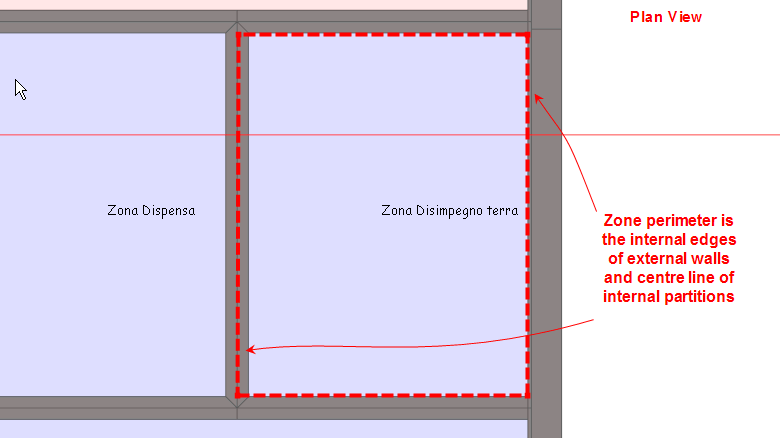Open topic with navigation
Block and Zone Dimensions
Combined constructions
The diagram below illustrates how blocks should be defined and how zone
volumes and surface dimensions are derived from the parent block when
using Combined
constructions.

The important things to note are:
- The length/width dimensions of the block are measured
from the outside of external walls.
- The height of the block is the floor-floor height:
- For ground
floor blocks, the block height is the distance from the ground
level to the underside of the floor slab of the next block up.
- For non-ground
floor blocks, the block height is measured from the bottom of the
block floor slab to the bottom of the floor slab of the block above.
- Flat roofs are placed on top of the block, so
when drawing a block with a flat roof you should exclude the roof
construction in the height.
- External floors are placed under the block, so
when drawing a block with an external floor you should exclude the external floor construction thickness
in the height.
- Wall surfaces extend the full height of the block.
- Zone surface dimensions (shown in green dotted
lines above) are measured from inner edges of outer walls and the centre
line of partitions.
- Floor surfaces extend horizontally to the inner
surface of external walls and to the centre line of partitions. See below
for more on zone/surface dimensions.
 Show
diagram for Separate Constructions
Show
diagram for Separate Constructions
The zone volume used in ventilation
calculations is the actual inside volume (shown in yellow in the diagram
above). These inside zone surface dimensions are used to define surface
heat transfer areas in simulations and other calculations.
Zone perimeter (plan view)

Other related information
- See Combined
Constructions for information on the meaning of the Construction Model
data.
- Also see Constructions
for how to edit the construction configuration.
- And the Model
Geometry Example section for a detailed worked example illustrating
how surface areas and volumes are calculated.


 Show
diagram for Separate Constructions
Show
diagram for Separate Constructions
